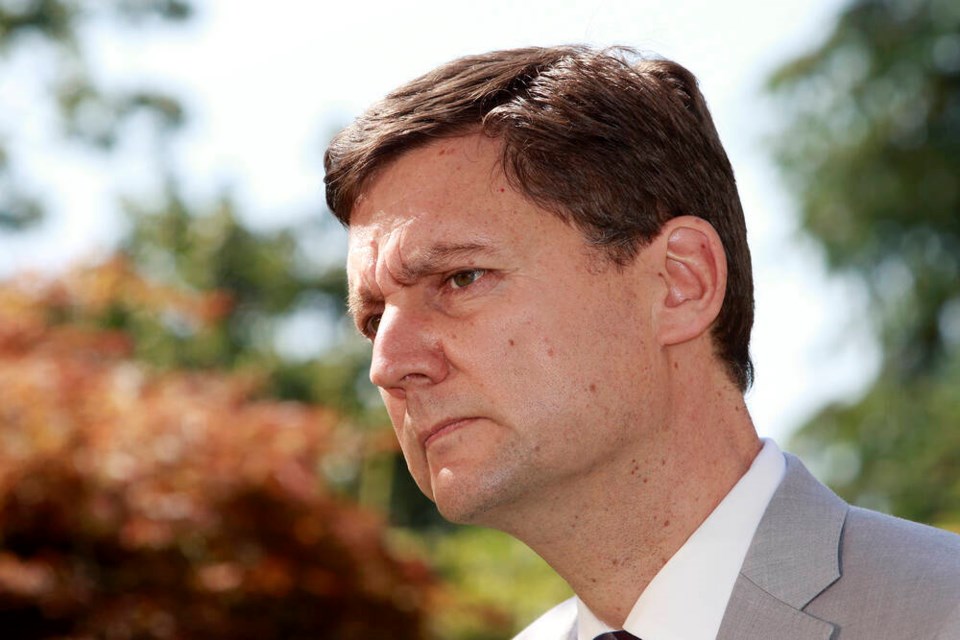Reform is needed to the structure of the province’s Expensive Drugs for Rare Diseases Committee that recommended cutting drug coverage for a 10-year-old Langford girl, says B.C.’s premier.
At least 10 people resigned from the 58-member committee after Health Minister Josie Osborne reversed the decision and resumed coverage of a drug called Brineura for Charleigh Pollock.
Osborne had previously twice upheld recommendations from the B.C. committee and Canada’s Drug Agency to end coverage, saying discontinuation criteria had been met and the risk could be greater than the benefit.
For six years, Charleigh had infusions of the drug every two weeks — at a cost of $33,000 per dose — to slow the progression of her fatal neurodegenerative disorder called Batten disease (CLN2), which has a life expectancy of 10-12 years for an untreated child.
The reversal followed a public outcry, including fundraising to continue the treatments, and a letter from over a dozen U.S.-based Batten disease physicians.
Eby said he agrees with Osborne’s decision to end a situation in which Charleigh was caught in the middle of a battle between experts, but says he’s also talked to the minister about refining the process going forward.
“There’s no question in terms of the Charleigh case that the public was not served by the current structure that we have, Eby said at an unrelated press conference on Monday.
Eby described the current structure as a committee that “doesn’t speak to the media, doesn’t speak to the public, makes decisions behind closed doors, and only speaks to the treating physician, and even then, only through the Ministry of Health.”
That resulted in the appearance that “politicians were making decisions about access to medicines,” said Eby.
Currently, the Health Ministry makes the final decision about drug coverage for rare diseases based on advice from the Expensive Drugs for Rare Diseases committee (EDRD), established in 2007, which has eight specialized subcommittees made up of area experts.
The subcommittee chairs also sit on the EDRD committee, which also includes ethicists, economists, hospital pharmacists, external physicians, and Health Ministry and Provincial Health Services Authority representatives.
The names of committee and subcommittee members are not publicly disclosed, and the committees don’t produce any public reports.
Canada’s Drug Agency sets the criteria for the use and funding of rare drugs based in part on drug companies’ research as well as peer-reviewed studies. That information is then used by the EDRD committee for its review.
Eby said the province needs to figure out a process that works for doctors and other experts who are making decisions on drugs for patients in a way “that’s transparent and understandable to the public.”
“It did not work that way, and in the Charleigh case, we had two groups of experts fighting it out, one very publicly, one secret committee within the Ministry of Health, speaking only through politicians,” said Eby, who invited current and former committee members to help “find a path forward.”
Incredibly difficult cases will continue to come up as researchers develop more treatments for rare illnesses, he said.
After Eby’s remarks on Monday, Dr. Sandra Sirrs, one of the committee members who resigned, told the Times Colonist that any changes to the EDRD process should “put control of the process in the hands of the clinical experts.”
“This is the way every other patient level decision is made,” said Sirrs, pointing to the example of how candidates for a transplant or dialysis are chosen.
Sirrs, who also resigned as medical lead for rare diseases at the Provincial Health Services Authority, which provides specialized health services across the province, has said the government’s reversal was mired in politics.
Sirrs had served on B.C.’s expensive drugs for rare diseases committee since its inception in 2007, and as chairwoman of the subcommittee that recommended ending coverage of Brineura.
Colin Dormuth and Ken Bassett of the University of B.C.-based Therapeutics Initiative, in discussing the challenge of expensive drugs for rare diseases funded by the province in an opinion piece for the Vancouver Sun, said drugs for rare diseases coming to market have been priced at $100,000 to $2 million per year for each patient, with the vast majority over $200,000 per year.
They said B.C. spent $153 million on rare-disease drugs in the fiscal year ending in March 2024, and $101 million in 2023, with the annual growth rate in the most recent five-year period averaging 48 per cent.
“At this growth rate, B.C. will pass $1.6 billion per year in five years. It will pass $11.3 billion annually in 10 years, solely devoted to drugs for less than one per cent of the population, equivalent to almost a third of today’s total health-care budget,” they said.
The Therapeutics Initiative authors said they will not be reviewing or commenting on Charleigh’s case.
>>> To comment on this article, write a letter to the editor: [email protected]



